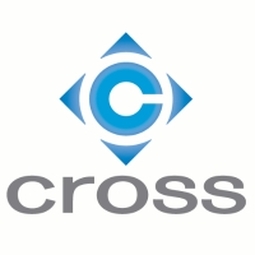Impinj
日常用品的数字生活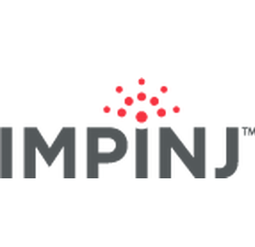
概述
公司介绍
Impinj 将数十亿日常用品(例如服装、医疗用品和汽车零件)无线连接到消费者和商业应用程序(例如库存管理、患者安全和资产跟踪)。 Impinj 平台使用 RAIN RFID 将有关这些物品的及时信息传递到数字世界,从而使物联网Impinj, Inc. 能够提供用于识别、定位和验证物品的超高频射频识别(RFID) 解决方案。该公司的产品包括包含集成无线电芯片和支持 SDK 的 Indy 阅读器芯片; Monza 标签芯片,为 RFID 标签提供内存选项和扩展功能;和 Speedway 固定 RFID 阅读器和天线,用于基于 RFID 的信息。它还提供 STP Source Tagging Platform,这是一个用于创建高性能编码和验证系统的平台。该公司服务于零售、资产管理、消费电子、娱乐、医疗保健、物联网和物流市场。
物联网解决方案
主要客户
英特尔、Patrizia Pepe Firenze、Exito、澳洲航空、韩美、American Apparel、思科、普渡、memove、KH Lloreda
物联网应用简介
技术栈
Impinj的技术栈描绘了Impinj在平台即服务 (paas), 网络与连接, 和 传感器等物联网技术方面的实践。
-
设备层
-
边缘层
-
云层
-
应用层
-
配套技术
技术能力:
无
弱
中等
强

Supplier missing?
Start adding your own!
Register with your work email and create a new supplier profile for your business.
实例探究.

Case Study
Hospital Inventory Management
The hospital supply chain team is responsible for ensuring that the right medical supplies are readily available to clinicians when and where needed, and to do so in the most efficient manner possible. However, many of the systems and processes in use at the cancer center for supply chain management were not best suited to support these goals. Barcoding technology, a commonly used method for inventory management of medical supplies, is labor intensive, time consuming, does not provide real-time visibility into inventory levels and can be prone to error. Consequently, the lack of accurate and real-time visibility into inventory levels across multiple supply rooms in multiple hospital facilities creates additional inefficiency in the system causing over-ordering, hoarding, and wasted supplies. Other sources of waste and cost were also identified as candidates for improvement. Existing systems and processes did not provide adequate security for high-cost inventory within the hospital, which was another driver of cost. A lack of visibility into expiration dates for supplies resulted in supplies being wasted due to past expiry dates. Storage of supplies was also a key consideration given the location of the cancer center’s facilities in a dense urban setting, where space is always at a premium. In order to address the challenges outlined above, the hospital sought a solution that would provide real-time inventory information with high levels of accuracy, reduce the level of manual effort required and enable data driven decision making to ensure that the right supplies were readily available to clinicians in the right location at the right time.

Case Study
Retailer Uses RFID Scanner to Improve Efficiency
Patrizia Pepe wished to improve the logistics of their warehouse: accepting incoming goods from their production sites, movement of items throughout
the warehouse, and packaging of goods for distribution to the retail locations. They initially tried to use barcodes for this function. Because barcodes must be individually scanned within a line-of-sight, the acceptance of goods coming into the warehouse was too time consuming. Working with the University of Florence, Patrizia Pepe instituted a five-month pilot project beginning in August of 2009 to test the validity of an RFID solution. The pilot involved tagging of about 60,000 items for the second seasonal collection, and convinced the company to move forward with tagging all items.

Case Study
Retail Uses RFID to Enable Cold Chain Monitoring
Like most grocery retailers, Hy-Vee is faced with the challenge of providing the highest quality products to its shoppers. Shoppers want the longest possible shelf life from perishable products and expect a consistent product experience each time they shop. Controlling the quality of products sold leads to shopper loyalty, which is of paramount importance to the success of Hy-Vee. Before products arrive in stores, Hy-Vee's distribution centers (DCs) handle items including dairy products, fresh meats, seafood, deli items, produce and frozen goods, all of which have different temperature needs and sensitivities. During transit from suppliers to DCs, Hy-Vee has limited visibility and temperature management abilities due to large amount of supplier managed transportation. For instance, during a week-long transit, a supplier's carrier equipment may malfunction, causing an item to thaw and then refreeze once repairs are made. Hy-Vee sought help from TempTRIP, an RFID solution provider that focuses on shipping, storage, receiving, and temperature control. TempTRIP's EPC RFID tags use Impinj chips to monitor and report temperature readings throughout the shipping and receiving process. The tags can also be re-configured and re-used, a unique feature within the current market of temperature monitoring devices.
Case Study
Asset Tracking
Each day, PAK picked up soiled linen which had been hand counted by its customers. On the following day, they were expected to return the exact same amount of linens. However, manual counts conducted by PAK’s customers were always inaccurate (a problem inherent to soiled counting) and not being able to return exact amounts was very problematic. PAK sought an RFID-enabled textile-tracking system to enable total linen monitoring throughout the whole linen cycle, while increasing facility and operation efficiency, preventing loss and ensuring customers receive the correct textiles. PAK chose to work with USTEK RFID Solutions, a sister company that designs and manufactures integrated RFID terminals for industrial laundry markets worldwide. It was challenging to find RFID products that operated well in the PAK facility, as the environment was damp and full of metal trolleys. After testing many different readers, chips and antennas in the facility, USTEK and PAK chose to use Impinj products due to their superior performance.

Case Study
Increase in Laundry Facility Output with Item Intelligence
Established in 1854, Berendsen is a European textile service business with 127 locations in 15 countries throughout Europe. Berendsen provides service solutions to lease, source, clean and maintain textiles used in various settings, including healthcare, washroom, hotel, restaurant, and cleanroom. Since 1996, Berendsen has focused on providing services for the healthcare and industrial areas, becoming a leader in their field. Supplying hospitals, retirement homes and care facilities with linens represents a significant part of the daily business for one Berendsen facility in Germany. This facility receives tons of used linens each day. The contaminated linens, shipped in laundry bags and roll cages, are weighed rather than counted to protect workers from the risk of infection. Once the linens are washed, they are manually sorted, giving Berendsen insight into what they’ve received and how much manpower they will need to process the laundry. Berendsen needed a solution that allowed for the bulk reading of contaminated linens, enabling them to better plan the manpower needed to finish each job. They also wanted a solution that would scale in the future to meet other project needs. In the past, RAIN RFID solutions had been implemented in other Berendsen facilities to give better insights into laundry care. As bulk reading was the number one priority of the new system, a RAIN RFID solution, powered by Impinj technology, was implemented to analyze the bulk shipments arriving at the facility.

Case Study
Hospital Supply Management
UT Medical Center and DeRoyal began working together in 2014 initially to develop a new preference card system for use in their operating rooms. What they found was a need to not just optimize physician preference cards, but also a need to analyze supply usage, stocking levels, returns, locations and quantities. They needed a solution that would help make acuity-based decisions and accurately document usage. Improving patient safety during procedures was also a priority. The medical center’s workflow studies found surgical staff leaving the OR for an average of 10.75 minutes per case to fetch supplies needed for OR procedures because they were not readily available in the OR. Such repeated door openings can increase the risk of surgical site infection and contribute to surgical mistakes. UT Medical Center wanted to limit the number of supply-related door openings by having needed supplies readily available, and thereby reduce the risk of surgical site infections. DeRoyal, a medical device manufacturer committed to improving both the clinical quality and economic health of its customers, worked with UT Medical Center to create a solution that would meet the organization’s needs. The solution, an intelligent trashcan called the DeRoyal Continuum® Safe, leverages the Impinj platform to automatically capture data about supplies consumed during surgical procedures.
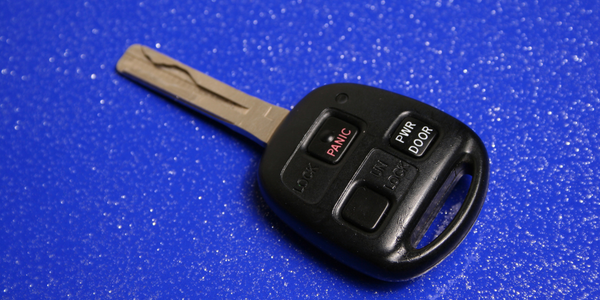
Case Study
Car Dealership Tags Keys to Prevent Theft
As a provider of luxury vehicles, the dealership was often a target of organized crime. The thieves would take the car for a test drive and switch out the key with a fake one. They would then return after the dealership had closed—and sometimes while it was still open—and steal the car by loading it onto a truck. Car theft was costing the dealership about $420,000 per year.
同类供应商.
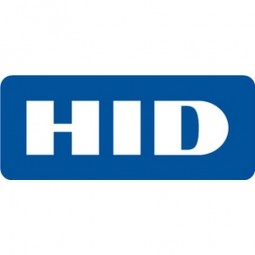
Supplier
HID Global
HID Global is the trusted source for innovative products, services, solutions, and know-how related to the creation, management, and use of secure identities for millions of customers around the world. The company’s served markets include physical and logical access control, including strong Authentication and credential management; card printing and personalization; visitor management systems; highly secure government and citizen ID; and identification RFID technologies used in animal ID and industry and logistics applications.
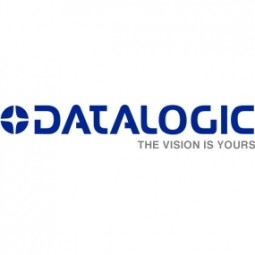
Supplier
Datalogic
Datalogic is a global technology leader in the Automatic Data Capture and Industrial Automation markets. They are a world-class manufacturer of bar code readers, mobile computers, sensors, vision systems, and laser marking systems delivering innovative solutions for a wide range of applications in retail, transportation & logistics, manufacturing and healthcare. Datalogic innovation sets the standard in multiple industries.
.jpg)
Supplier
Savi Technology (Lockheed Martin)
Savi is the leader in applying big data analytics, Data Science, and Machine Learning to in-transit visibility. We develop innovative Internet of Things (IoT) and in-transit visibility solutions for the largest and most complex supply chains in the world. More than 1,000 companies and government organizations depend on Savi applications to reduce supply chain disruptions, improve delivery performance, and decrease logistics costs. For more information about Savi visit www.savi.com.
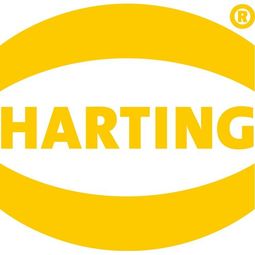
Supplier
HARTING Technology Group
The HARTING Technology Group is skilled in the fields of electrical, electronic and optical connection, transmission and networking, as well as in manufacturing, Mechatronics and software creation. The Group uses these skills to develop customized solutions and products such as connectors for energy and data transmission applications including, for example, mechanical engineering, rail technology, wind energy plants, factory automation and the telecommunications sector. HARTING also produces electromagnetic components for the automotive industry, and is a specialist in industrial applications in the form of enclosures, housings, cabling and/or the assembly of individual or complete systems, as well as automated vending systems.




